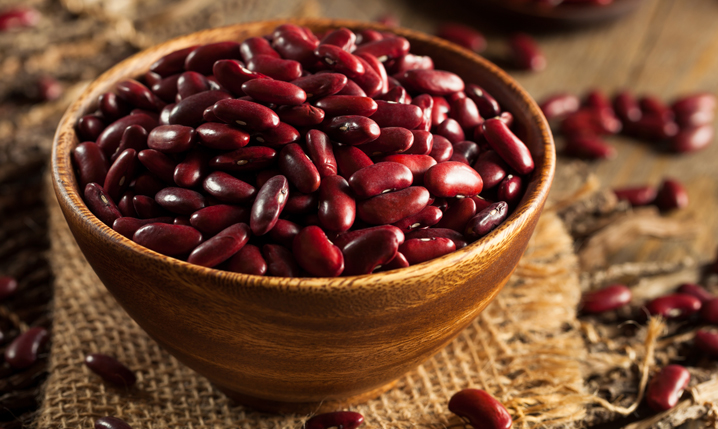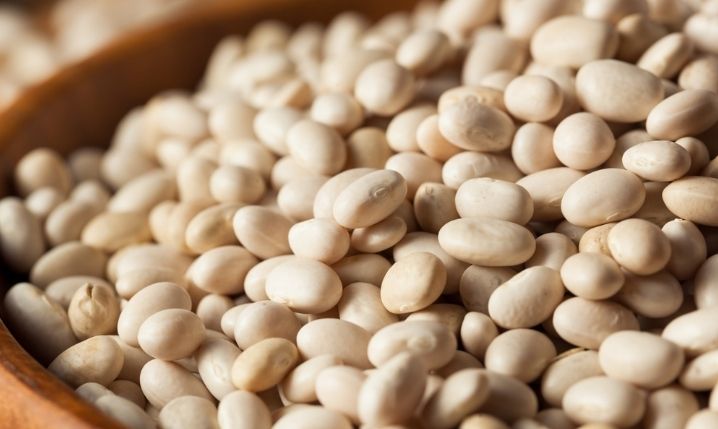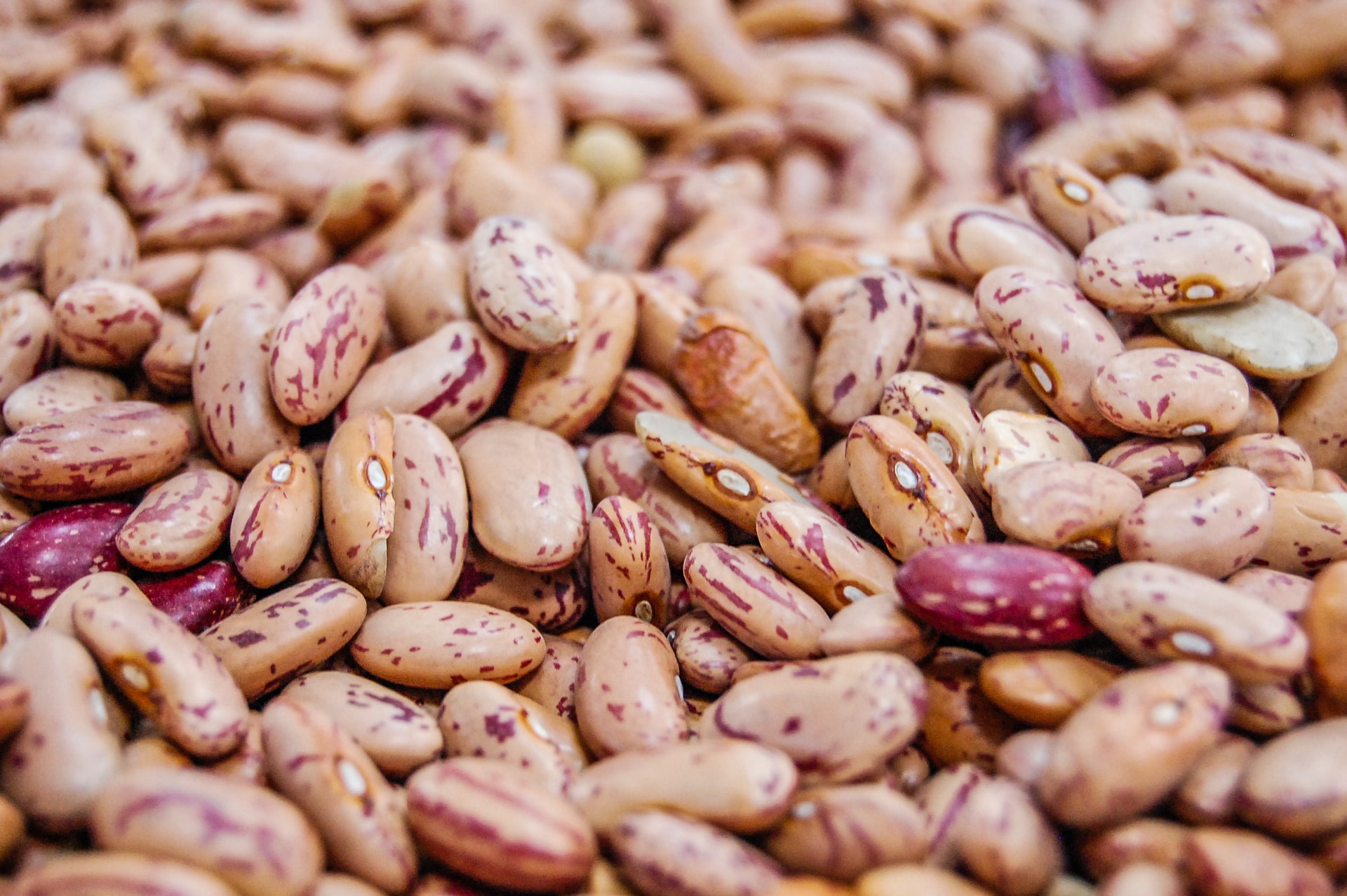Pinto beans are an important ingredient in many recipes because of their delicious taste and creaminess. However, sometimes you’ll require a pinto bean substitute. In this article, we explore some of the best options.
Contents
What Are Pinto Beans?
Pinto beans lighten to a solid beige when cooked, and they have a creamy taste that combines well with different flavors. There are many ways to eat pinto beans: dried, green, fried, cooked, or pre-made foods.
The classes of these medium-sized legumes include Italian flat, Spanish brown, Brazilian red, and Venezuelan yellow. South Americans refer to them as “poroto frutilla,” meaning strawberry bean – they have a mottled beige and brown appearance when dry. Currently, pinto beans’ largest producers are in Peru, China, and Brazil.
While Pinto beans are a go-to for many people, sometimes substitutes are necessary. If you’re out of stock or tired of your regular beans, this post is for you.
Pinto Beans Substitutes
1. Black Beans

Black beans are first on the list because they’re perfect pinto beans substitutes. They’re also medium- to small-sized and have a similar taste and texture to pinto beans. If you were to eat them in a blind test, you’d be hard-pressed to tell the difference between both.
Black beans are black (obviously), and any dish you cook or mash them with will take on some dark pigment. They’re also lower in cholesterol, have more fiber, protein, antioxidants, and cook longer than dry pinto beans. Use black beans as substitutes for pinto beans in burritos, tacos, soups, huevos rancheros, or broths.
2. Borlotti Beans
Also known as cranberry or Roman beans, Borlotti beans are often mistaken for pinto beans. They’re both speckled/mottled, medium-sized, buttery, or creamy, nutritious, and delicious. Borlotti beans are pretty popular in Portuguese, Spanish, and Italian cuisine.
These beans lend a rich creaminess to your meal, provided they’re well cooked. Enjoy them in savory, garden-fresh dishes like antipasti or anything with lemon juice and olive oil. You won’t be missing much from pinto beans with the high fiber, iron, and protein content of Borlotti beans.
3. Kidney Beans

Kidney beans are larger than pinto and don’t seem like a suitable alternative, but don’t discard them just yet. The difference is negligible once you cook the dish, especially those simmered for a few hours. Many Mexican dishes interchangeably use kidney and pinto beans, including tacos, refried beans, and casseroles.
White or pink kidney beans would be more like pinto beans if your cuisine needs the pinto look, but they’re harder to find. Still, their protein, iron, potassium, and magnesium amounts are almost equal, so don’t hesitate to use kidney beans. You can’t go wrong with kidney beans as substitutes for pinto beans in soups, stews, chili, gumbo, and masala.
4. Cannellini Beans
One of the most popular alternatives for pinto beans is Cannellini, also called white kidney beans. Cannellini or white kidney beans, get their name from the city of Canelli in Piedmont. Another Italy original, cannellini beans, are slightly tougher and larger than pinto beans.
These colorful and versatile beans are excellent substitutes for pinto beans for your pasta with beans or soups. They have the right amount of protein, fiber, and carbohydrates to keep you energized and satisfied throughout the day. An overnight soak before cooking is necessary if you want them to be as soft as pinto beans.

Navy beans might be smaller, but they’re similar to pinto beans in flavor, texture, and cooking time. The creaminess of navy beans is a little milder than pinto beans, but it’s a suitable pinto bean substitute. Navy beans are the most mashable of these substitutes and are ideal for refried beans that need mashed pinto.
Use navy beans if your recipe has pinto beans as an accent rather than the main dish. Remember that they get soft as they cook, like pinto beans, so you won’t have to adjust any recipe’s timing.
6. Red Beans
Red or adzuki beans are sweet to pinto’s buttery flavor. They’re small and famous in Chinese and Japanese cuisine. In savory dishes like curries, beans and rice, hummus, and grain bowls, you can use red beans as a robust substitute.
Their sweet flair might be a little different from pinto beans, but they’re also ideal as alternatives. Other sweet dishes that add the zing include a sweet potato stew and barbecue sauce. Sprouts for a salad will come up in two to four days if you soak adzuki beans in water.
7. Lima Beans

You won’t find substitutes for pinto beans is as exotic and vibrant as lima beans. These Peru beans are one of the oldest bean varieties, cultivated before corn. Today, they’re a popular ingredient for most dishes.
They have a sharp green color making them perfect as garnishes and side dishes. These ‘butter beans’ also have an incredibly smooth texture and are very starchy, so they’ll do for a filling meal.
8. Chickpeas
This legume is another excellent substitute option for pinto. Chickpeas originated from the Middle East, but they’ve voyaged worldwide, leaving a significant mark.
Chickpeas have a very earthy and nutty flavor, with a similar flesh color to pinto beans. It’s best to cook chickpeas with many flavors and spices because they’re pretty bland on their own. Soups and salads are ideal dishes where you can use chickpeas as substitutes for pinto beans.
Conclusion
Pinto beans are in a class of their own, but these pinto bean substitutes come close in taste, texture, and nutritional value. Black beans are a perfect substitute in all areas, while red beans and adzuki offer different tastes and vibrant colors. Experiment with these pinto beans substitutes, and you’ll definitely find one or two favorites.
